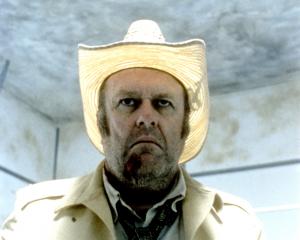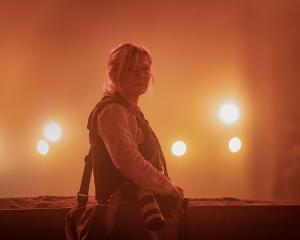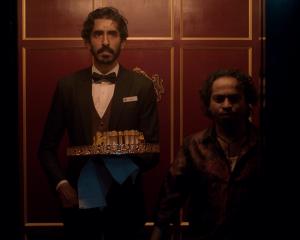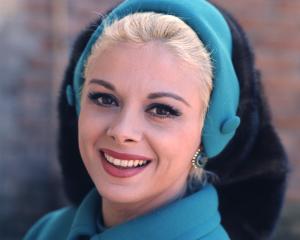The world first took notice of The Secret in Their Eyes (El secreto de sus ojos) in March, when the movie upset higher profile competitors such as The White Ribbon and A Prophet to walk away with the Academy Award for Best Foreign Language Film.
The surprise win by the twist-filled, Hitchcock-flavoured thriller baffled many Oscar prognosticators, mostly because the film had not yet been widely seen outside the festival circuit and its native Argentina, where it had become a box-office smash hit.
But Juan Jose Campanella, who wrote and directed the movie, humbly admits he was not entirely shocked by the victory.
"People were saying, 'This one is the favourite, because it won at Cannes or Berlin'," Campanella said. "But when it comes to the foreign language Oscars, a much more reliable formula is to look at which movies win the audience award at festivals, not the jury prizes.
"Out of the five nominees, our movie was the only one that was a true genre film - a film noir - and that's also one of the few American genres. So academy members were probably able to relate to our movie more. A Prophet was also a genre film - it's a prison movie - but ours also has humour and romance."
Based on the novel by Eduardo Sacheri, The Secret in Their Eyes alternates between past and present to tell the story of Benjamin (Ricardo Darin), a recently retired criminal-court investigator still haunted by the unsolved rape and murder of a young woman 25 years earlier.
When he starts poking into the cold case once again, the unspoken mutual attraction between Benjamin and his former supervisor Irene (Soledad Villamil), who is now a judge, is reawakened.
More than half of the film unfolds in the mid-1970s during the waning days of Isabel Peron's presidency, when public sentiment started to turn against the democratically elected leader, whose administration increasingly violated human rights for the sake of combating so-called leftist guerrillas.
The political backdrop is an integral element of the film's plot and part of the reason for the great success the movie has enjoyed on its home turf. But Campanella, who was previously an Oscar contender with 2001's Son of the Bride, is a shrewd film-maker with years of experience working in mainstream Hollywood (he has directed numerous episodes of such popular TV shows as Law & Order: Special Victims Unit, House and 30 Rock).
He knew that for the movie to travel the world and connect with audiences outside Argentina, the political backdrop had to be easily accessible - if not invisible - to viewers unfamiliar with his country's history.
"The conventional wisdom, oddly enough, is that those themes are box-office poison," Campanella said. "But this movie has proved that there's a great hunger in Argentina for stories that deal with that political period. We've talked a lot in films about the dictatorship that followed Peron. It's clear, like World War 2, which was the most clear-cut war there has ever been: The Nazis were evil, and the Americans were the good guys.
"But before then, Argentina was like the Vietnam War. You didn't know who was who. I thought it was very important to explore that theme, but I just wanted it to be a context, the way you don't need to know about World War 2 to understand Casablanca. It's not a war movie, but the war is important."
More than a political thriller anchored in history, The Secret in Their Eyes is, first and foremost, a timeless romance in which the two would-be lovers are kept apart by matters of class and status.
As the title implies, the love between Benjamin and Irene is unspoken, but it is clearly evident in their eyes, which Campanella often shoots in extreme close-up. That's the primary reason he shot the film in widescreen anamorphic scope instead of the more traditional 1:85 ratio.
"I had to use widescreen, because otherwise all the close-ups would have included the characters' noses," he said. "I also hate to use establishing shots, but it's important to see the environment the characters live in, and the widescreen format allows you to show both at the same time.
"Visually, there are two extreme leitmotifs throughout the movie: The characters are very small within the frame, surrounded by huge structures like ants and shots in which their eyes fill the screen."
The grandly cinematic aspects of The Secret in Their Eyes are best summed up by a jaw-dropping mid-film sequence, done entirely in one take with no apparent cuts, the sort of thing film-school students will dissect and study in order to figure out how Campanella did it.
Beginning with a helicopter shot high above a packed football stadium in Buenos Aires, the camera miraculously descends, finding Benjamin and his partner among the cheering crowds as they spot and pursue a suspect through the stands, the bowels of the stadium and eventually on to the playing field.
"I felt like I needed a big scene there, a really big moment to jump-start the film, because, in a way, the story is almost starting over: The villain is introduced for the first time, and a whole other facet of the plot is introduced."
Campanella says he intentionally designed the shot so that even if you watch it frame by frame on DVD, you won't be able to spot the cuts.
"You start with an aerial shot of the stadium, which is the way any other director would have done it, and the viewer is waiting for a cut to a close-up of your characters.
"But the cut doesn't come, and the shot keeps going and going, and when the camera floats down and lands in the audience, the viewer suddenly feels like they are in that stadium.
"The lack of cutting sets off an adrenaline charge in the viewer.
"It's so much fun to design a shot like this. I was very proud that even some people who worked on Avatar asked me how I did it."












